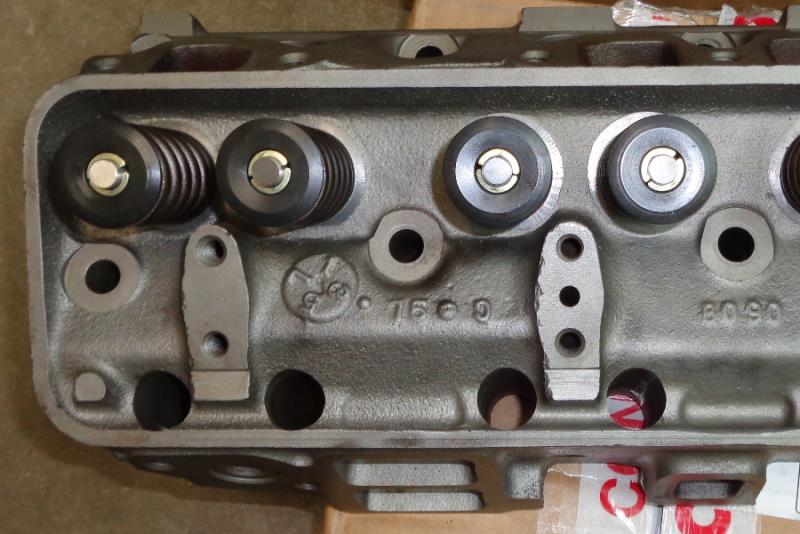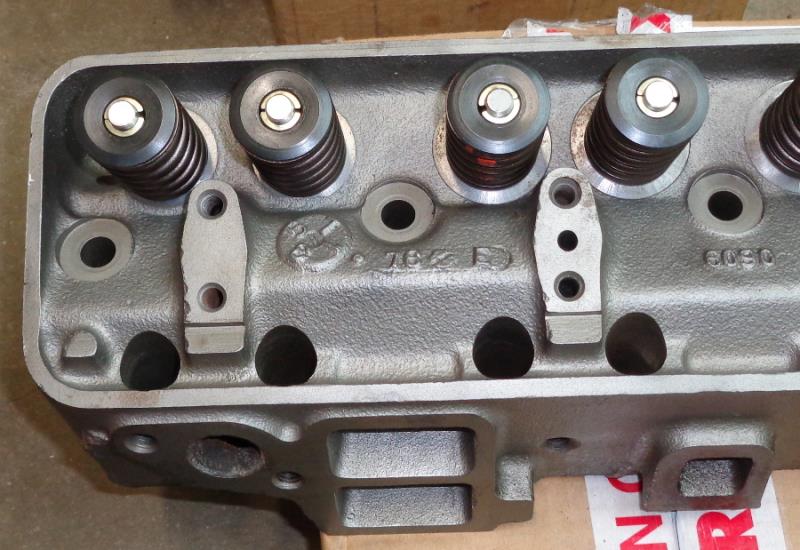|
By '60 Fairlane - 10 Years Ago
|
This is probably an easy question, but..., Anyway over the years I've heard of both large and small "G" heads. Having only seen one set of these heads in person the question is, is it a difference in the size of the cast in letter and how do you tell them apart? Thanks for educating me on this point.
I did try a search first, but the search function doesn't seem to like me. Thank you all again. -Dave.
|
|
By NoShortcuts - 10 Years Ago
|
|


Well... I just tried to post a picture of each set of casting letters with no success. One of those things I haven't mastered yet... 
|
|
By '60 Fairlane - 10 Years Ago
|
Thanks for trying. I got a set of G heads with the 312 I bought a while back. Problem is they are badly pitted. One might be savable, haven't spent much time on them yet. This engine came with the early rounded top dual exhaust manifold, so I'm thinking this could be an early '57 engine. Is the date code system Ford used in the 50's the same as the date coding used in the 60's?
Just trying to learn what I can before going out to look for heads. -Dave.
|
|
By charliemccraney - 10 Years Ago
|
I see the pictures.
|
|
By '60 Fairlane - 10 Years Ago
|
|
Must be sunspots as I can see the pictures now too. About how much taller are the casting numbers on the large G heads compared to the small G heads? -Dave.
|
|
By NoShortcuts - 10 Years Ago
|
5/16 inch tall for the little casting letter 'G' heads
3/8 inch tall for the big casting letter 'G' heads
Notice the difference in orientation of the letters to the valve cover surface or the block deck surface with the two different versions... One set of letters is upside down compared to the other.
I've got a glitch in my computer. Some times the pictures are viewable and sometimes they are not! 
Hope this helps, Dave. I can't help with the date code stuff.
|
|
By NoShortcuts - 10 Years Ago
|
In a thread last month pertaining to 'G' heads, if you didn't see this, it may be of help to you in evaluating the heads you've got...
From John Mummert's web site:
Do to the thinness of the deck surface of some Y-Block cylinder heads, it is recommended that unposted heads not be milled more than .025". Posted heads have been milled up to .045"without trouble.
If you need further clarification on this, don't hesitate to ask. 
|
|
By '60 Fairlane - 10 Years Ago
|
|
Thank you Noshortcuts, I thought it was about a 1/16" difference, but I didn't catch the orientation till you pointed it out. I have seen John's info on milling the posted and non-posted heads. That's why I'm not sure if what I've got is savable. I will take another look at what I have, I think they are the early non-posted G's. Thanks again. -Dave.
|
|
By '60 Fairlane - 10 Years Ago
|
Well I was wrong and not for the first time. Thought the heads I have were little G, but they are the large G. The only other numbers I found were D22 on one head and D23 on the other. These numbers were bellow the center two exhaust ports. This would be the date codes right? If so, they are still unposted correct? At least the pads still measure at 1", so maybe they are still savable.
Thanks again. This is a great place. -Dave.
|
|
By NoShortcuts - 10 Years Ago
|
Tim McMaster has a helpful Internet posting on his web site that addresses the cylinder head 'posting' issue. Click the Internet address below to view it. While Tim has put this on the Internet, my understanding is that the pictures are from Ted Eaton.
http://yblockguy.com/techtips/postedheads.html
When you look at the picture of the cylinder head, it indicates with dashed circles where the 'posts' are located. Using a flash light, look in the holes the white arrows point to and angle the light toward where the 'posts' are indicated to be. IF the posts are there, you can't miss them.
Even IF the heads are not posted, unless they're really badly pitted, .025 will probably clean them up satisfactorily for use. Your auto machine shop will be able to advise you on this. With the composite-type cylinder head gaskets, I can't imagine your having a sealing problem. The pitting in the cast iron (caused probably by out-of-doors condensation moisture eroding the metal) can be a source of pre-ignition IF the pitting is severe...
In working on this 'old stuff', your machine shop may be glad to hear how thick the pads were when Ford produced the heads.
Hope this helps. 
|
|
By Ted - 10 Years Ago
|
There are essentially three different ‘G’ heads. While all the small letter ‘G’ heads are unposted, the large letter ‘G’ heads can be unposted or posted. Supposedly all heads cast after May 15, 1957 are posted but I have found exceptions to that. The date code on the ‘G’ heads is located under the valve cover and more specifically under the rocker shaft on the right side of the head when viewing from the exhaust side of the engine. Left side of the head when viewing from the intake side of the head. The first character indicates the year, the next character(s) indicates the month, and the next character indicates the day.
Here are pics of a pair of posted heads and their date codes. This pair is originally off of a 1957 Thunderbird and both look to be original to the engine.

1957 May 28

1957 June 5
Here’s the link to the past thread on this site about how to identify posted heads if they are off the engine.
http://forums.y-blocksforever.com/FindPost6764.aspx
|
|
By '60 Fairlane - 10 Years Ago
|
Again thank you, both Noshortcuts and Ted. Guess I'll have to clean some sludge to find the date code, but will also check out what I can see/feel through the holes in the deck.
After looking at these heads last night they aren't quite as bad as I remembered. But, one head has what looks to be evidence of a swallowed bolt. Right on the edge of the combustion chamber and the quench area there is what looks like threads rolled into the cast iron. Not sure how well this will clean up, even with a full cut. Guess I'll find out. Everybody have a great Y-Block day. -Dave.
|